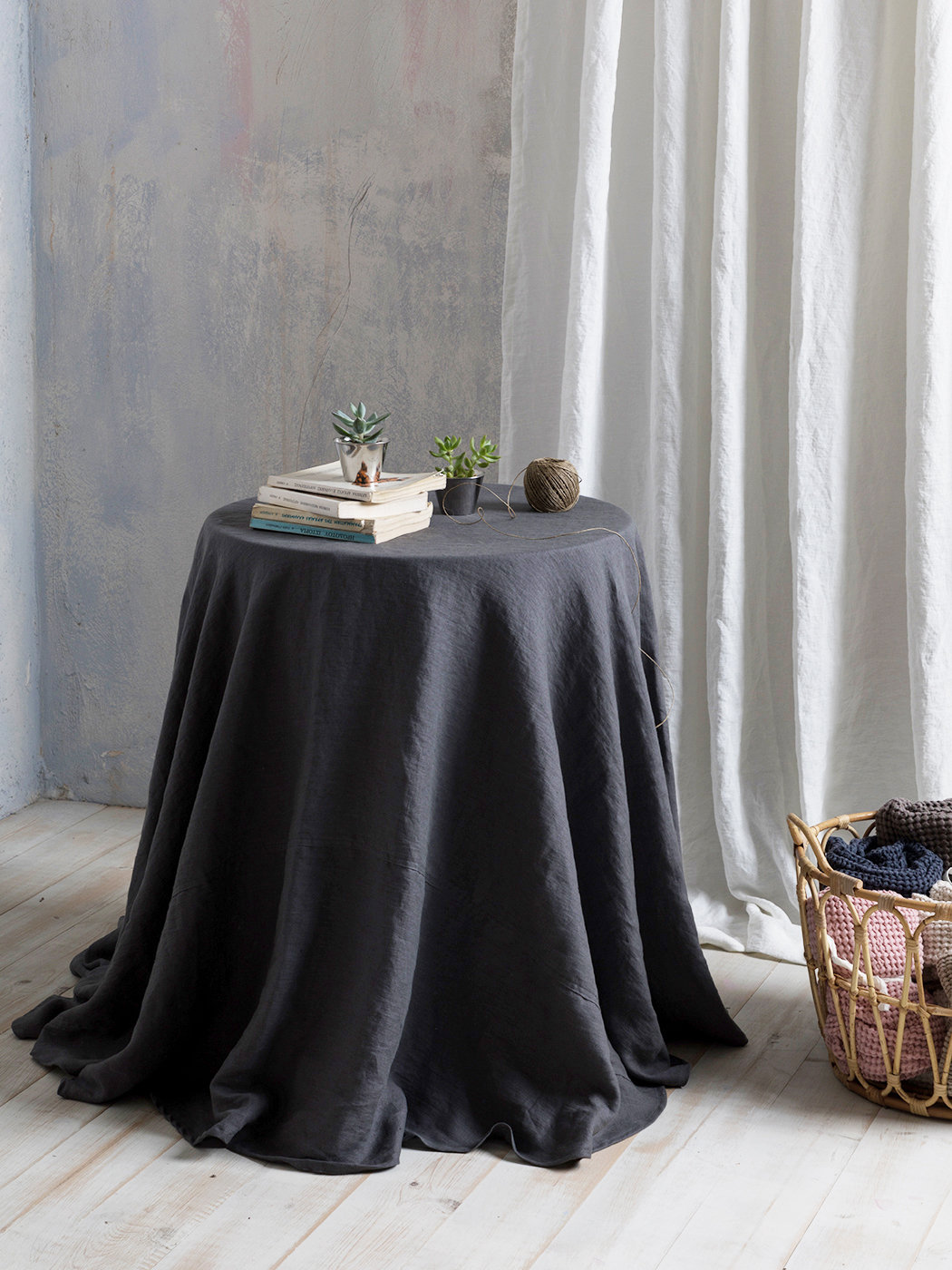Innovative Table Runner Uses: Beyond the Dining Table
Wiki Article
Bed Linen Textile Innovations: Discovering Modern Trends and Creative Applications in Layout and Textile Market
From lasting manufacturing approaches to cutting-edge weaving innovations, the development of bed linen is improving the landscape of the textile market. As we dive into the realms of imaginative style applications and the development of linen blends and crossbreed materials, a new phase unravels in which bed linen's duty in future textile innovations takes center stage.Lasting Practices in Linen Production
Sustainable methods in bed linen production have actually come to be progressively important in the fabric sector's efforts to reduce environmental influence and promote ethical sourcing approaches. Linen, a natural fiber stemmed from the flax plant, supplies a series of advantages such as resilience, breathability, and biodegradability. However, standard approaches of linen production can entail substantial water intake, chemical usage, and energy-intensive processes.To address these obstacles, lots of textile makers are adopting lasting practices throughout the bed linen production process. This consists of sourcing flax from natural farms that prevent damaging pesticides and chemicals, carrying out water-efficient retting methods to extract fibers from the flax stalks, and utilizing eco-friendly dyes and coatings. Additionally, some firms are buying renewable resource sources to power their production centers and lowering waste through recycling and upcycling efforts.
Technological Improvements in Bed Linen Weaving
With the expanding emphasis on lasting methods in linen manufacturing, the textile industry is currently seeing a surge in technical developments especially targeted at changing the art of linen weaving. These innovations are reshaping the means linen fabrics are created, supplying enhanced performance, quality, and creative thinking in weaving strategies.Among the essential technological advancements in linen weaving is the combination of digital looms. These sophisticated looms are geared up with software application that permits complex and intricate layouts to be woven with precision. By digitizing the weaving process, producers can achieve higher consistency and precision in their bed linen fabrics.
Additionally, improvements in thread spinning technology have made it possible for the manufacturing of finer and more long lasting bed linen threads - table cloths. This leads to softer and smoother linen materials that retain their top quality also after numerous usages and laundries
Furthermore, the growth of environment-friendly dyeing procedures and coatings for bed linen materials is getting traction. These lasting techniques not only lower the environmental effect yet also satisfy the boosting consumer demand for fairly created textiles.
Creative Style Applications for Bed Linen
Cutting-edge creative methods are progressively forming the imaginative layout applications for bed linen in the fabric industry. Linen's natural aesthetic appeal and ability to blend with various other materials make it a favored choice for producing special garments and devices that provide to the environmentally aware consumer.Furthermore, developers are trying out with linen in home style, utilizing its breathable and long lasting nature to craft trendy furnishings such as curtains, bedding, and upholstery. The structure and drape of bed linen bring a sense of refinement and comfort to indoor spaces, including a touch of sophistication to contemporary homes.

Bed Linen Blends and Hybrid Fabrics

Hybrid textiles, on the other hand, take the concept of blending a step better by integrating additional aspects such as metal strings, recycled products, or conductive fibers. These ingenious fabrics not just increase the layout opportunities but likewise present functional elements like conductivity, antimicrobial residential properties, or boosted resilience. Crossbreed textiles are progressively being made use of in different sectors, consisting of fashion, interior decoration, and technological fabrics, where the need for multifunctional products gets on the rise.
Bed linen's Function in Future Fabric Innovations
:max_bytes(150000):strip_icc()/smooth-linen-tableware-sky-24_2000x-e91a79aab4354001b5445ec12d511141.jpg)
In the realm of future textile advancements, linen is anticipated to be a vital gamer in the development of advanced practical fabrics. Designers and scientists are discovering methods to boost bed linen's intrinsic top qualities with technical innovations, such as including clever fabrics, nanotechnology, and efficiency coatings. These developments aim to elevate bed linen's performance attributes, making it ideal for a wider variety of applications, from activewear to safety clothes.
Furthermore, the combination of linen with other all-natural or artificial fibers opens endless possibilities for producing unique textiles with unique properties and functionalities. By leveraging bed linen's attributes and exploring innovative blends, the dig this fabric sector is poised to introduce interesting advancements that cater to developing customer requirements and sustainability requirements.
Conclusion
To conclude, the expedition of sustainable practices, technical developments, innovative layout applications, bed linen blends, and its duty in future fabric innovations highlight the continuous evolution of bed linen material in the contemporary design and textile industry. With an emphasis on technology and creative thinking, the adaptability and green nature of linen make it a useful material for manufacturers and designers alike, leading the means for further developments and innovations in the area of textiles.As we dive into the worlds of innovative design applications and the introduction of linen blends and crossbreed materials, a brand-new chapter unfolds in which bed linen's duty in future fabric developments takes center phase.
Discovering the combination of linen with various other materials has actually led to the development of cutting-edge blends and hybrid fabrics in the modern textile market. Linen blends supply an one-of-a-kind combination of the qualities of bed linen with those of various other fibers, resulting in textiles that possess improved residential properties such as this link boosted durability, boosted draping, and reduced wrinkling.The development of linen blends and hybrid textiles has set the stage for Bed linen to play a crucial function in driving future fabric technologies.In the world of future textile innovations, bed linen is anticipated to be an essential player in the advancement of advanced functional fabrics.
Report this wiki page